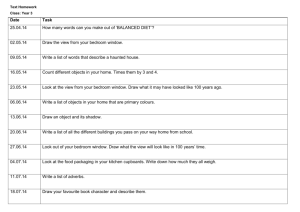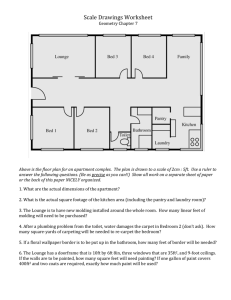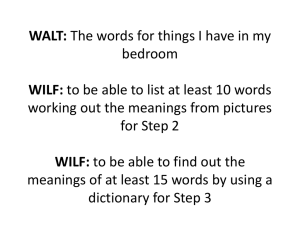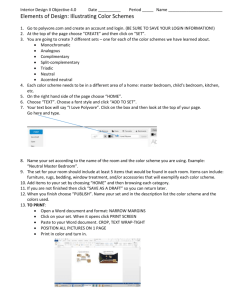Math5700 Project 1 Project 1 is due on Wednesday, October 5
advertisement
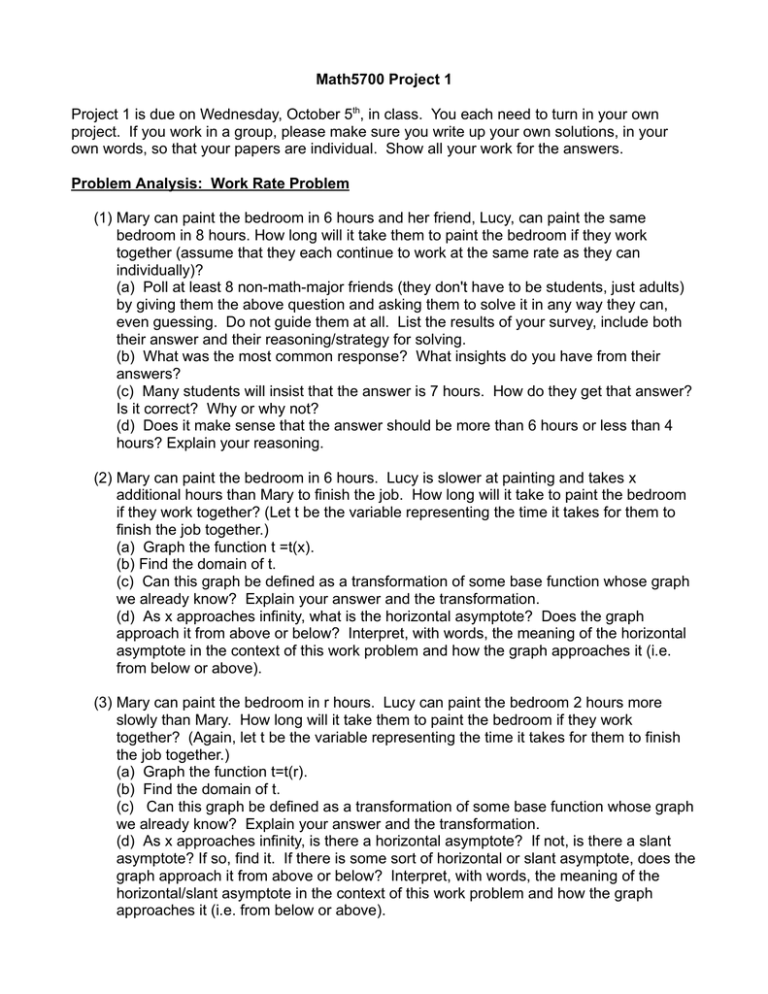
Math5700 Project 1 Project 1 is due on Wednesday, October 5th, in class. You each need to turn in your own project. If you work in a group, please make sure you write up your own solutions, in your own words, so that your papers are individual. Show all your work for the answers. Problem Analysis: Work Rate Problem (1) Mary can paint the bedroom in 6 hours and her friend, Lucy, can paint the same bedroom in 8 hours. How long will it take them to paint the bedroom if they work together (assume that they each continue to work at the same rate as they can individually)? (a) Poll at least 8 non-math-major friends (they don't have to be students, just adults) by giving them the above question and asking them to solve it in any way they can, even guessing. Do not guide them at all. List the results of your survey, include both their answer and their reasoning/strategy for solving. (b) What was the most common response? What insights do you have from their answers? (c) Many students will insist that the answer is 7 hours. How do they get that answer? Is it correct? Why or why not? (d) Does it make sense that the answer should be more than 6 hours or less than 4 hours? Explain your reasoning. (2) Mary can paint the bedroom in 6 hours. Lucy is slower at painting and takes x additional hours than Mary to finish the job. How long will it take to paint the bedroom if they work together? (Let t be the variable representing the time it takes for them to finish the job together.) (a) Graph the function t =t(x). (b) Find the domain of t. (c) Can this graph be defined as a transformation of some base function whose graph we already know? Explain your answer and the transformation. (d) As x approaches infinity, what is the horizontal asymptote? Does the graph approach it from above or below? Interpret, with words, the meaning of the horizontal asymptote in the context of this work problem and how the graph approaches it (i.e. from below or above). (3) Mary can paint the bedroom in r hours. Lucy can paint the bedroom 2 hours more slowly than Mary. How long will it take them to paint the bedroom if they work together? (Again, let t be the variable representing the time it takes for them to finish the job together.) (a) Graph the function t=t(r). (b) Find the domain of t. (c) Can this graph be defined as a transformation of some base function whose graph we already know? Explain your answer and the transformation. (d) As x approaches infinity, is there a horizontal asymptote? If not, is there a slant asymptote? If so, find it. If there is some sort of horizontal or slant asymptote, does the graph approach it from above or below? Interpret, with words, the meaning of the horizontal/slant asymptote in the context of this work problem and how the graph approaches it (i.e. from below or above). (e) For this function t(r), use Calculus methods to find the slope anywhere on the graph. (f) Interpret, with words, the meaning of the slope in the context of this problem. (g) Use the slope formula to help you, in some way, estimate t if Mary paints the bedroom in 6.2 hours, rather than 6 hours. (h) Calculate the exact answer for t if it takes Mary 6.2 hours to paint the bedroom. Compare the results (of (g) and (h)). 1 1 (i) Working together for one hour, the two women would paint of the r r 2 bedroom. If they each worked at the same (mean) rate, they would have painted 1 1 1 1 of the bedroom in one hour. Show that is greater than r1 r 1 r r 2 1 1 . r1 r 1 (4) What is the arithmetic mean of two numbers, x and y? What is the geometric mean of x and y? What is the harmonic mean of x and y? (a) Give a specific example where the arithmetic mean would be most appropriate. (b) Give a specific example where the geometric mean would be most appropriate. (c) Give a specific example where the harmonic mean would be most appropriate. (d) What is the mathematical relationship between the arithmetic and harmonic means? (e) Which mean played somewhat of a role in the calculations for questions (1) through (3) and how?
